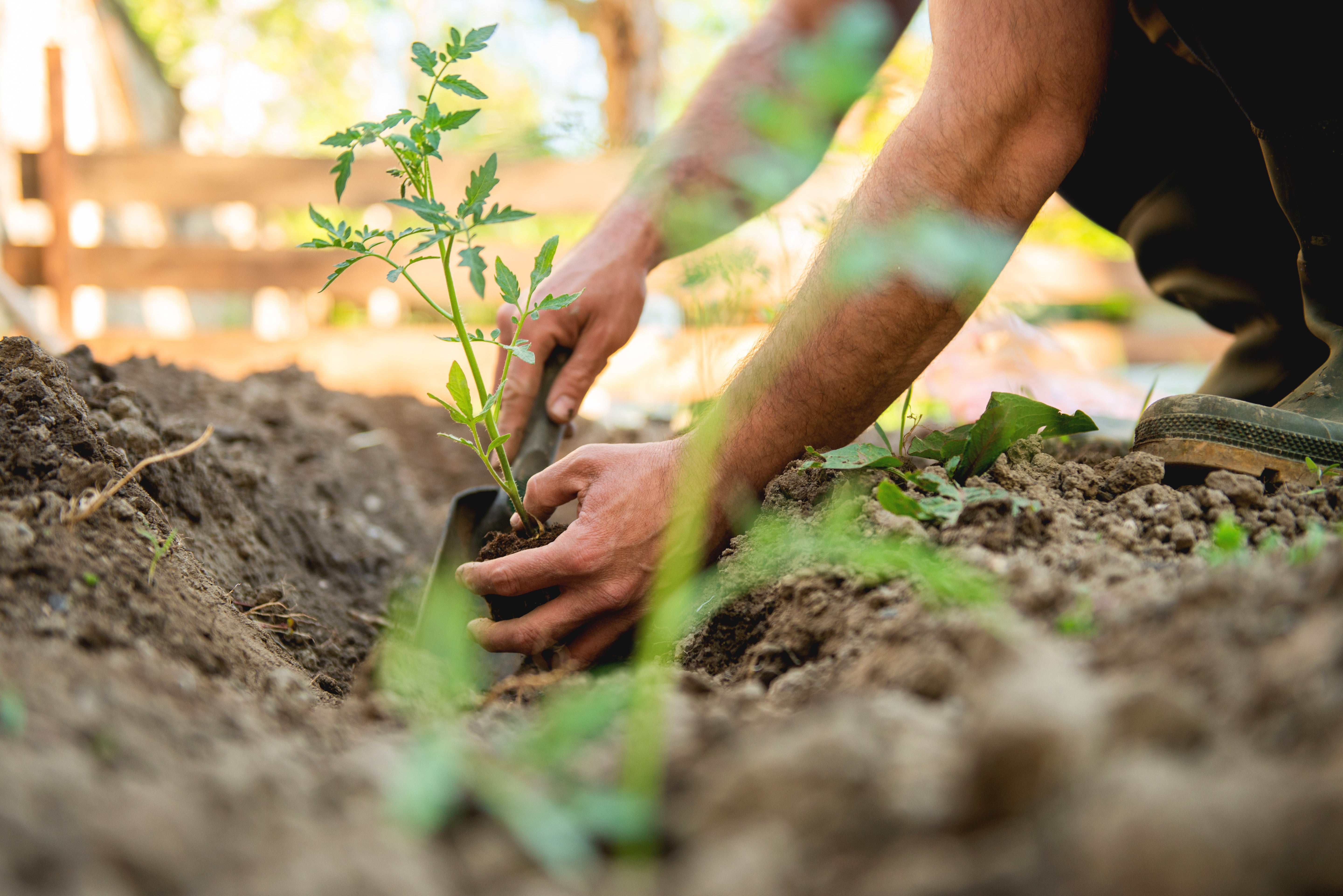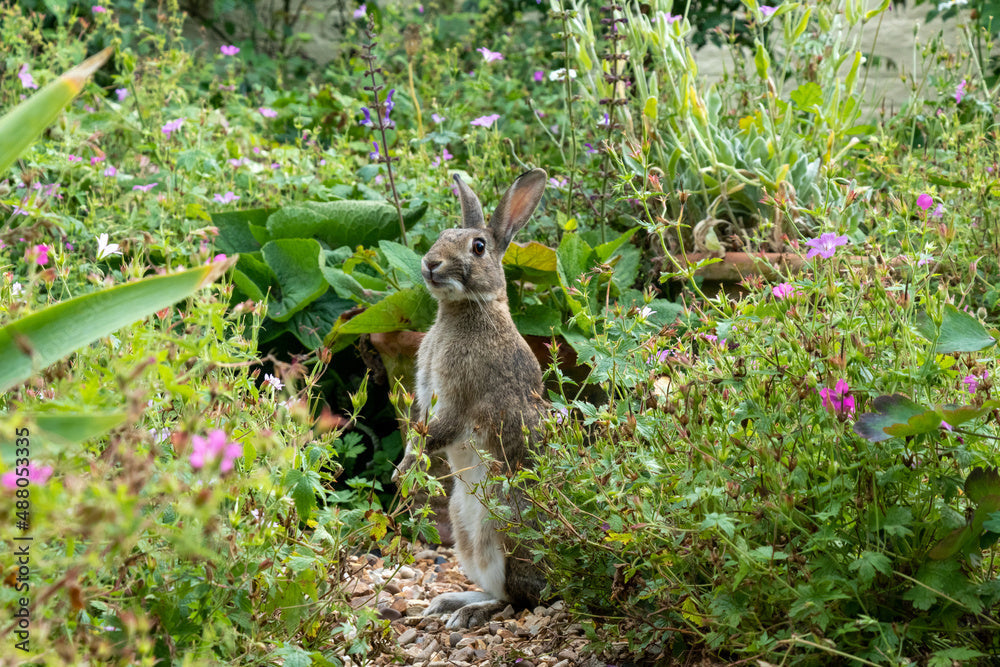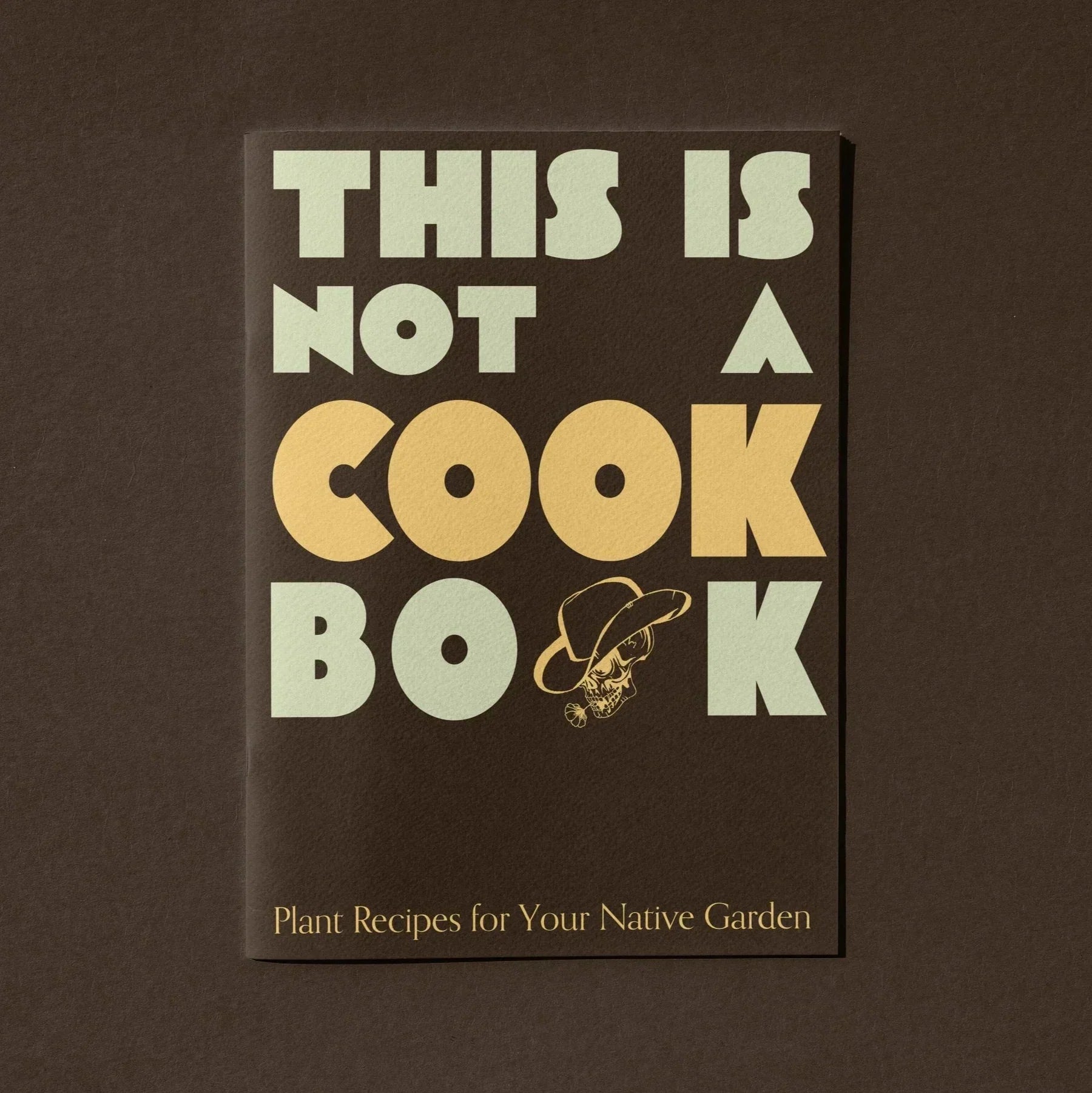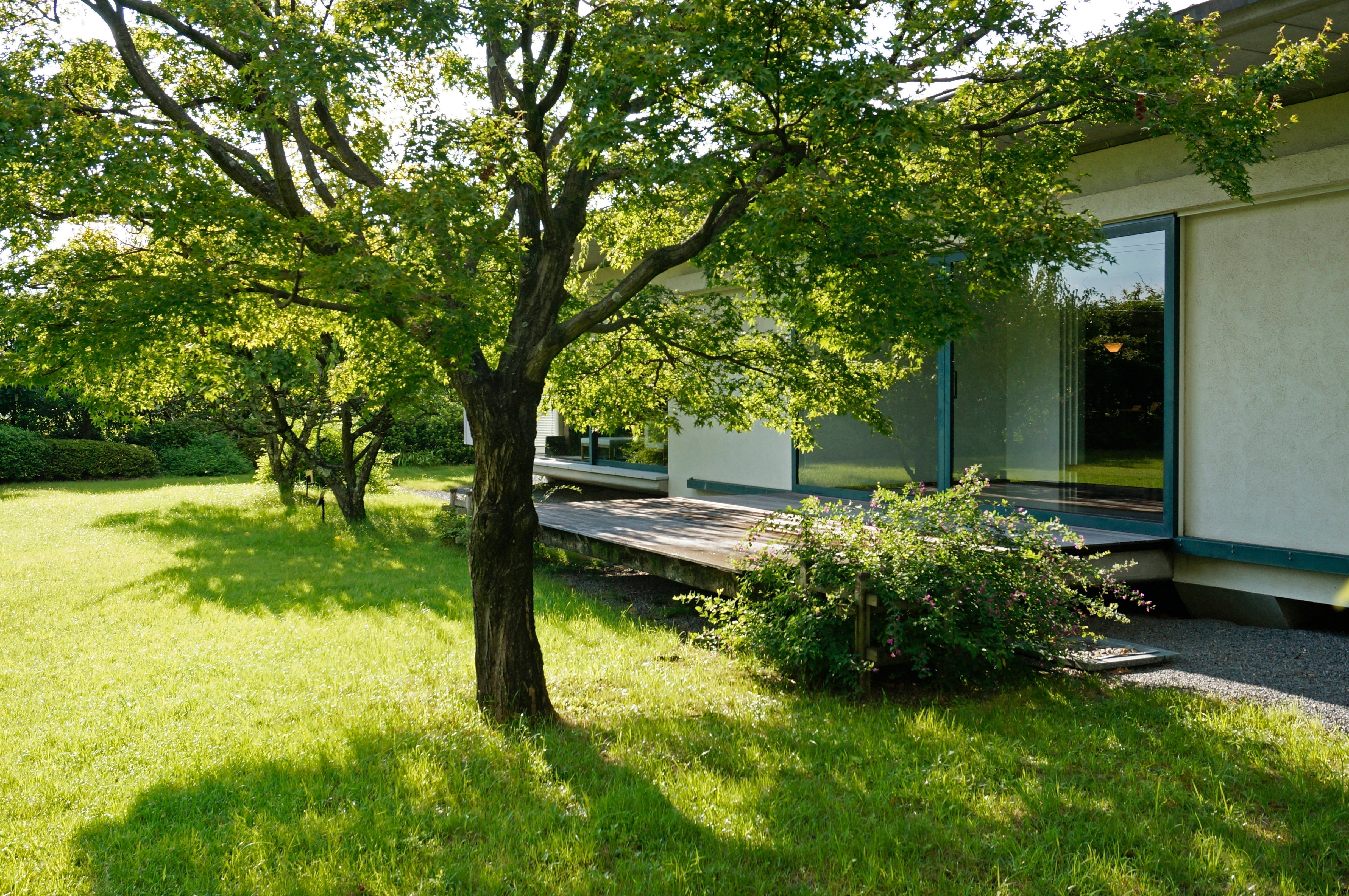Earth Day Gardening Challenge: Create a Zero-Waste Garden with Native Plants

Every year on Earth Day, we are reminded of the urgent need to protect the green and blue ball in the sky that we call home, and one of the best ways to contribute is by rethinking how we garden. Traditional gardening generates an enormous amount of waste, from chemical fertilizers to the creation of yard “waste.” Zero-waste gardening offers a sustainable alternative using native plants, composting yard waste, and reducing the use of chemicals.
Join the Zero-Waste Earth Day Gardening Challenge this Earth Day to transform your outdoor space into a self-sustaining, waste-free oasis. Whether you're a newbie or a seasoned green thumb, this guide will help you design a beautiful, low-maintenance landscape. Let’s dig in!

Understanding Zero-Waste Gardening: What It Means & Why It’s Important
While gardening is often considered eco-friendly, traditional gardening is anything but. Some of its problems include flimsy plastic plant containers, synthetic fertilizer bags, and microplastics in slow-release fertilizers, all of which contribute to microplastic pollution. Synthetic pesticides and fertilizers rapidly degrade soil health, cause water pollution through runoff, and cause air pollution and climate change when released as gases from the soil. Furthermore, the disposal of yard waste like grass clippings, pruned branches, and fallen leaves adds to landfills when they should be composted to enrich your soil.
Another issue with traditional gardening is excessive water usage, especially in non-native landscapes that require constant irrigation. Grass lawns are particularly troublesome because they consume a huge amount of water. They also demand frequent mowing, which burns fossil fuels and increases carbon emissions, and they rely heavily on synthetic fertilizers, pesticides, and herbicides.
Zero-waste gardening is a sustainable gardening approach that minimizes waste and conserves resources through reuse, composting, and repurposing, creating a vibrant, thriving, regenerative outdoor space. Instead of relying on synthetic fertilizers, flimsy plastic pots, and chemical pesticides, zero-waste gardeners focus on regenerative gardening and permaculture concepts like using no-dig gardening, compost, and natural mulch to conserve water and enrich the soil naturally.
Texas native water-wise plants are also critical to zero-waste gardening since they are adapted to your climate. Eco-friendly gardening practices like xeriscaping with drought-tolerant plants, rainwater harvesting, and creating a wildlife-friendly garden all enhance ecological benefits while minimizing waste and making gardening easier!

How to Create a Zero-Waste Garden With Texas Native Plants
Benefits of Native Plants For a Zero-Waste Garden
Native Texas plants are adapted to your ecoregion and grow with little to no water, maintenance, or fertilizers. They are more drought-tolerant, less prone to pest infestations, and support our native wildlife. When you plant a diverse array of native species, they create pollinator-friendly habitats and attract wildlife to your yard.
To learn more about native plant landscaping, download our Native Plant Recipe Guide, which offers plenty of great tips on native plants, water-wise gardening, and growing the way nature intended!
Best Drought-Tolerant and Pollinator-Friendly Plants for Texas Gardens
Here are some great drought-tolerant and pollinator-friendly plants for your garden this Earth Day.
Coralberry: A Zero-Waste Garden Essential
Coralberry is a resilient, drought-tolerant, low-maintenance Texas native shrub that thrives in various conditions. It’s also a pollinator-friendly plant and provides food and shelter for native wildlife, perfect for eco-conscious gardeners aiming to create a sustainable, water-wise landscape. Pick up a Coralberry to add beauty and biodiversity to your Earth Day gardening challenge!
Image: CORALBERRY is available now at Nativo Gardens!
Deer Muhly: A Drought-Tolerant Grass for a Sustainable Garden
Deer Muhly is a stunning native Texas ornamental grass that brings beauty with its feathery pinkish-purple plumes and resilience to your zero-waste garden. It’s drought-tolerant and low-maintenance while providing excellent erosion control. Ideal for xeriscaping and wildlife-friendly landscapes, Deer Muhly enhances soil health and provides a great eco-friendly addition to your Earth Day garden challenge.
Image: DEER MUHLY is available now at Nativo Gardens!
Desert Willow: A Water-Wise Tree for a Zero-Waste Garden
Who doesn’t love the gorgeous Desert Willow with its delicate pink and purple blooms that bloom all summer long? Native to the deserts of Texas, it’s also one of the best drought-resistant plants for Texas gardens. It attracts native pollinators like bees and hummingbirds, providing ecological benefits. It also requires virtually no maintenance, making it an excellent choice for Earth Day gardening efforts focused on conservation and water-wise planting.
Image: DESERT WILLOW is available now at Nativo Gardens!
Eyelash Leaf Sage: A Pollinator-Friendly Herb for Sustainable Gardening
Eyelash Leaf Sage is another drought-tolerant Texas native that brings color, fragrance, and ecological benefits to your garden, all while reducing water usage and maintenance. The brilliant red flowers make it perfect for pollinator-friendly landscaping, attracting butterflies, bees, and hummingbirds galore while adding significant visual appeal for humans.
Image: EYELASH LEAF SAGE is available now at Nativo Gardens!
Zero-Waste Garden Design: Sustainable Landscaping Techniques
Try these basic sustainable landscaping techniques to enhance your zero-waste garden this spring.
Xeriscaping

Xeriscaping is the practice of using native, drought-tolerant plants to reduce or eliminate water use. During the establishment phase, right after planting your native plants, you must water them until they grow nice, healthy, strong roots deep in their new home. After about 6 months to 2 years, depending on the plant, you can usually stop watering altogether, unless you are in a severe drought or heat wave, or are growing native plants for food, in which case you want to give them some, but not a lot, of water.
Rainwater Harvesting
Use barrels to collect rainwater when it comes and use that to water your edible landscape plants and your veggie garden.
You can also create dry river bed features in your yard on slopes to direct rainwater into a rain garden, a low spot where water collects. You can also consider utilizing your gray water in a rain garden. In this garden, you will want to plant anything that likes more than the usual amount of moisture in your ecoregion.
Composting: Turning Waste into Garden Gold
Kitchen scraps and yard waste should never be tossed in the trash. In fact, these items are as valuable to a garden as gold is to people, and we don’t throw gold in the garbage! Compost is the basis of healthy soil and healthy plants. Start a simple compost today in a pile, compost tumbler, bin, or dig a trench in the ground and bury your compost for those in the more arid parts of our state. Toss in all your kitchen scraps (excluding meat and dairy if you want to keep the animals out), and add leaves, grass clippings, small, broken branches, and other yard “waste.” As a general rule of thumb, add 2 parts of dry, brown materials like dead leaves, yard waste, or shredded paper to 1 part green or wet materials like green leaves and kitchen scraps. This helps balance the nutrients properly so the microbes can do their magic and turn your waste into garden gold.

Soil Regeneration
Soil regeneration is an organic and permaculture garden concept focusing on building healthy soil to feed plants rather than constantly using synthetic fertilizers. It's easy to do: add compost and mulch to all your garden beds every spring and again in the fall. Also, practice no-dig gardening techniques since the more we expose soil to the air, the more we harm those microbes that are the key to healthy soil. There isn’t much more to it than that!
Mulching With Organic Materials
Mulching with organic materials rather than synthetic materials like rubber or dyed wood mulch is critical to zero-waste gardens to retain soil moisture and regenerate the soil. While both technically help retain moisture and prevent soil erosion, natural mulch continues to break down and feed soil microbes and organisms. In contrast, synthetic materials pollute soil and water and harm soil microbes.
Reducing Plastic & Chemical Use in the Garden
Reducing plastic and chemical use is another critical element of any sustainable garden design. This Earth Day, say no to chemical fertilizers and pesticides. When you regenerate your soil with compost and plant a rich variety of native plants, your garden will thrive naturally.

Another thing to do is to minimize or eliminate the use of plastics. Our world is full of plastic, so it can be challenging. But all those thin plastic pots break down in our hot Texas sunshine within a couple of years, sometimes in a single season, and end up in the landfills. Opt for building beds and using glazed ceramic and terra cotta pots instead. When starting seeds, try using biodegradable pots. Not only are they better for the Earth, but they are also better for the plants since you plant them, pot and all, without disturbing their delicate little roots. While seed trays are hard to avoid getting in plastic, look for extra-thick, heavy-duty ones that won’t break in a single season. Finally, also consider upcycling materials like old bricks, cinder blocks, and wood scraps to build beds and compost bins at no cost.
Conclusion: Your Zero-Waste Garden as a Legacy for the Planet
Creating a zero-waste garden with native plants is more than just a sustainable gardening trend; it’s a powerful way to give back to the planet and support local ecosystems. When you choose native plants, reduce waste, and implement eco-friendly practices like composting and rainwater harvesting, you build a low-maintenance, water-wise garden that thrives naturally while minimizing environmental impact. It’s a win-win all around!
This Earth Day, embrace the zero-waste gardening challenge. Every small effort, like replacing a non-native plant with a pollinator-friendly native one or swapping synthetic fertilizers for compost, contributes to a healthier planet.
Are you ready to take the Earth Day Gardening Challenge? Download our Native Plant Recipe Guide, visit our shop for native plants, and share your Earth Day garden journey with us on Instagram and tag us. Let’s grow a greener future together!





Comments